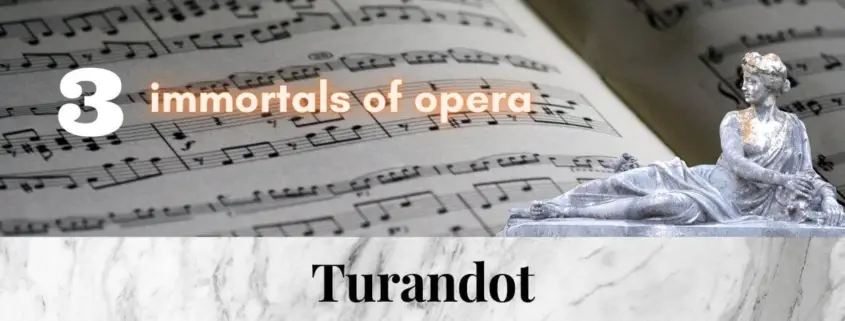Many connoisseurs consider Turandot to be the last great work written for the opera genre. If this is the case, then this genre ended with a true masterpiece.
Liu’s wonderful “signore ascolta”
Although this piece sounds like Puccini, the melody comes from Chinese culture. The entire vocal part is composed with only the five pentatonic notes of the black piano keys, but accompanied by Western harmonies. The melody is simple but very effective, Puccini deliberately restrained the voice accompaniment.
This aria is challenging because its brevity requires the singer to convey emotion in a short time. Pleading, love and modesty coupled with hope must be expressed in the most beautiful legato. Despair and tenderness must also shine through. A true Herculean task!
Listen to the interpretation of Montserrat Caballé conducted by Zubin Mehta. Rapturously sung piano with a heavenly ending. Her soft piani are the perfect counterpart to the metallic, cold Turandot.
Signore ascolta – Caballé.
In questa reggia – the grand entrance of Turandot
Turandot makes her appearance. She explains the reason for the bloody edict. Once a foreign king had killed an ancestor of Turandot. And now it is up to her to take revenge.
Halfway through the work, the timbre changes with Turandot’s entrance. Rarely has music characterized a character as glaringly as this aria. It is a music that radiates coldness, austerity and yet also melancholy, describing frustration with almost psychopathic features. The music swings to higher and higher registers and several times it reaches the high B, for the first time imitating the cry that the princess Lou-Ling uttered.
Let’s move on to one of the legendary Turandots of history, Eva Turner.
“What we hear is perhaps the most brilliant soprano voice on record anywhere. It is as if enormous masses of sound were being chased under the highest tension through a tightly set embouchure tube: the high notes glow with a cold, glistening intensity.” (Kesting, Great Voices)
In questa reggia – Turner
The great aria “Nessun dorma”
Puccini turned away from the “Verdian” style of tenor aria early on. Although this aria is glorious, it is significantly shorter and more involved in the plot than that of his predecessor. For Puccini, dramatic flow was always paramount. Long repetitive arias stand in the way of this.
Muted strings accompany the prince, exuding a nocturnal mood. But the prince is certain he will conquer the princess. And we hear one of the great (typical) Puccini arias, which became the most famous piece of Turandot, if not of opera music, the final high B went around the world in 1990 on the occasion of the World Cup.
Nessun Dorma – Pavarotti/Mehta






Leave a Reply
Want to join the discussion?Feel free to contribute!